Features
Strike A Pose
Madonna Albums Ranked Worst To Best
by Benjamin Ray
She is, and will always be, the Queen of Pop and one of the definitive pop stars of all time; it’s tough to imagine a world with Lady Gaga, Beyoncé, Miley Cyrus, Britney Spears, and Rihanna had Madonna not been the original, the barrier-breaker, the one who fearlessly paved the way through a combination of intelligence, great music, and sex appeal/controversy that she was happy to exploit. And although her 2015 album Rebel Heart wasn’t her finest outing, it showed an artist still pushing ahead and doing it her way. The list below ranks every Madonna studio album from 1983’s self-titled debut through Rebel Heart. The soundtracks to Who’s That Girl and Evita are not present because they are not technically Madonna album, even though she contributed several songs to both that were, unsurprisingly, hit singles.
 14. MDNA (2012)
14. MDNA (2012)
Madonna had inspired at least a generation of new singers by this point, but it was evident on Confessions On A Dance Floor that she was running out of things to say herself, and MDNA just proves that point. Very little here stands out; it’s competent, but not terribly inspired, sounding rather anonymous and, in the occasional juvenile lyric, downright silly from an artist of Madonna’s stature. She knows better, too, which makes one wonder if this is less about pandering and more about copying what’s popular to appeal to the kids these days. It didn’t work.
13. Hard Candy (2008)
There’s almost an air of desperation on this release, as if Madonna knows her time is slipping away and doesn’t want to admit it yet. Hard Candy brings in the hot talent of the day – Timbaland, Justin Timberlake, Kanye West, Pharrell Williams – and proceeds to have them provide shoutouts to Madonna when possible, a tactic she would also use on MDNA to effectively remind the world who she is and why she matters. Moreover, the lyrics have regressed to lines about candy and booty and giving it to me, a far cry from the Ray Of Light and even American Life days. The awful cover art reeks of attention grabbing. But the worst part is that it’s just musically inert and repetitive; anybody could have written and sung these.

Although this is technically a soundtrack for the Warren Beatty movie Dick Tracy, it’s a Madonna album, though classifying it is tricky because it’s a tie-in for a movie about gangsters and detectives in the 1940s. It’s interesting to her the singer drop her pop persona to embrace torch songs, lounge balladry, and a general approach befitting of her film star idols…all of which are named in “Vogue,” the final song on the disc. That track has nothing to do with this music, of course, as it continues the progression from Like A Prayer to Erotica, but it is the apotheosis of her ‘80s persona, the capper to her music form that decade and a goodbye of sorts as she turned to other musical avenues. This isn’t a classic album by any means, but it’s an interesting one in spots, particularly “He’s A Man,” “Hanky Panky,” and the ballad “Something To Remember,” all of which are underrated in the artist’s catalog.
11. American Life (2003)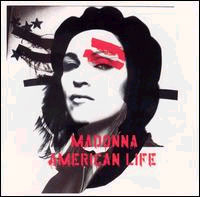
In which Madonna lost the plot. This marked the point where her albums stopped being events and started catering to a dwindling audience of just the faithful. She would still score singles now and again, but nowhere near the success of her first 20 years (which is an eternity in an industry that thrives on the now and has no room for two years ago, let alone 10 times that). Part of the reason is that recording an album called American Life when you have moved to England and worked with a French producer is disingenuous at best, but the bigger part is that the songs lack warmth and hooks, and the half-hearted club beats can’t save them. Only “Hollywood” and the Bond song “Die Another Day” are true highlights; the rest…well, you will forget you heard it the next day.
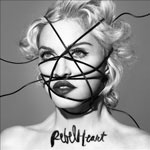 10. Rebel Heart (2015)
10. Rebel Heart (2015)
Overlong and not terribly memorable, Rebel Heart is still a solid disc that finds Madonna in reflective mode, looking back on her past hits, her evolution as a person, and generally embracing who she is. Rather than chasing trends like the last couple of albums, the singer stays in her wheelhouse of modern dance-pop with a handful of collaborators. It’s the sort of journeyman (woman?) pop album that fans will love but that newcomers won’t quite understand. But at this point, Madonna is playing to her fans anyway, not the entire globe.
9. Confessions On A Dance Floor (2005)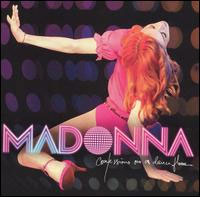
The 12 tracks here pulsate and throb true to the album’s title. Not since “Vogue” had Madonna been so consciously returning to her dance roots and her core fan base. The lack of dynamics means things get a little bleary after a while – the same is true of many techno/EDM albums – and a little diversity would have been nice to make this nice, but this still crackles throughout. “Hung Up” is a great opener and the album thumps with ease through the sassy “I Love New York,” “Jump,” “Get Together,” and “Future Lovers.” What’s funny is that this album probably would have done very well in 2013 alongside Daft Punk’s Random Access Memories, when disco was cool again for a while there.
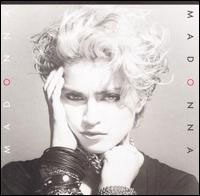 8. Madonna (1983)
8. Madonna (1983)
The one that started it all. It’s obviously a debut album: tentative, some songwriting missteps, an artist not totally in command of her message just yet, and that girlish voice that sounded a touch mechanical alongside the cheesy dance beats. Madonna later called this her “aerobics album,” which is both cutting and accurate; certainly, any light rock station/dentist office has no problem putting “Borderline,” “Lucky Star,” and “Holiday” in rotation to this day. The synth squiggles and bleeps on “Lucky Star” are almost distracting, much of the album sounds like it was written and recorded on a Toys R Us Casio keyboard, and a few of the songs drift up toward seven minutes long when there is absolutely no reason to other than to keep people on the dance floor. Yet there’s no denying the star power of the main attraction.
7. Music (2000)
Where Ray Of Light marked a low-key foray into the world of electronica, its follow-up embraced the sound of acts like Prodigy and Daft Punk to generally solid results. The title track never really veers from its one chord and was a smash hit anyway, but “Impressive Instant,” “Amazing” and “Runaway Lover” are standouts in this new style, songs that successfully pushes the thought of electronic and pop music together in the way that artists like Cher were doing at the time. Now, of course, EDM is so much a part of pop radio that it’s hard not to imagine a time when this was a new thing. If that was all the album had to offer, it would still be fine, but Madonna also introduces guitars into “I Deserve It” and the hit “Don’t Tell Me,” which show her already thinking ahead to the next album (the woeful American Life). Points deducted for the use of the Vocoder, though, which is irritating no matter who uses it, and for not including the fine soundtrack hit “Beautiful Stranger” in place of, say, “Paradise – Not For Me.”
 6. Bedtime Stories (1994)
6. Bedtime Stories (1994)
A warmer counterpoint to the great Erotica, this album is a reminder that sex is also about a connection between people, not just a bump ‘n’ grind ‘n’ move on altercation between two life forms. Where True Blue softened the edges of Like A Virgin, this one also digs deeper than its predecessor to touch on topics like the death of a relationship (the alluring “Take A Bow”), not knowing as much as you thought about your partner (the acoustic guitar-led “Secret”), staying tough (“Survival,” the best song Mariah Carey never sang in her Music Box period), and the realization that some people are not as open about sex (the bitchy “Human Nature”). The rest of the album may not reach these heights, but it’s still pretty good, expanding into new territory with the deep house of “Bedtime Story,” the opening salvo in Madonna’s move toward this style with the incredible Ray Of Light four years later.
5. True Blue (1986)
After Like A Virgin established her as a superstar, Madonna tweaked her image – continuing a trend that would last with every album from here on out until 2005 – and released another strong pop album. Expectedly, the disc yielded four big hits and one smaller one, as well as the by-now-expected filler tracks that define “cheesy ‘80s synth pop that we’d all like to forget happened.” It is up to the quality of the hits to carry the album, from the stunning ballad “Live To Tell” to the cheerful “Open Your Heart” to the message song “Papa Don’t Preach,” which shows the artist taking a firm political stand and adding a light string section to underscore the story. The other songs are tinny, corny, and kind of annoying 20 years on, but they’re still fun.
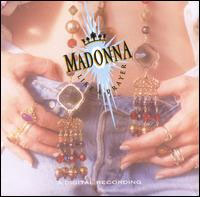 4. Like A Prayer (1989)
4. Like A Prayer (1989)
Madonna’s first real album statement remains one of her most ambitious, bold, and personal statements to date. It is clear her Catholic upbringing is part of her soul, yet she cannot help but thumb her nose at it with her outfits, songs like “Act Of Contrition” and “Like A Prayer,” and even her name. But more than religion, the songs here address her parents individually, her extended family, and her failed marriage to Sean Penn, as well as an empowerment anthem to fellow women in “Express Yourself.” It’s not a Serious Album per se, but it’s far less frothy than the last three, and even the cheesy-sounding pop confections like “Cherish” have more gravity than before. The second half of the record is more adventurous than Madge had ever been to that point, with “Dear Jessie,” “Oh Father,” the mashup “Act Of Contrition,” and “Keep It Together” showing different approaches to songwriting, the latter in particular a strong R&B-flavored dance track that looks to the future.
3. Like A Virgin (1984)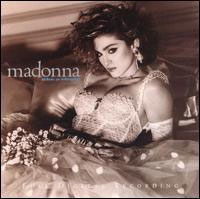
In all fairness, this should be tied for #3 with Like A Prayer, but it gets the slight nod only because it’s both more fun and more personality defining. After the somewhat bland debut, Madonna knew what she wanted to be and how to get it. She worked with Nile Rodgers (of Chic) to get there, reportedly spending all of her time in the studio – even during mixing – to be involved, but not overbearing, in the final product. The result made her a household name and went on to sell in the multi-millions worldwide, and it’s good girlish fun, from “Material Girl” and the adorkable title song to “Dress You Up” and “Into The Groove” (point of clarification: that song was on every re-release of the album except for in the U.S.). The true strength of the album is in the non-hit songs, which are far better than those on Madonna and True Blue, especially the driving “Over And Over” (which should have been a much bigger hit), “Angel,” the heartbreaking cover of “Love Don’t Live Here Anymore” (featuring an audible sob from the singer toward the end, which Rodgers left in), and “The Pretender.”

As bold, provocative, and frankly sexual as Madonna ever got on record, this signaled a new direction for the singer in the new decade. Where the single “Vogue” said goodbye to the ’80s, the single “Justify My Love” started off the ’90s, and this disc takes that song’s approach and stretches it over 14 tracks (13 on the Parental Advisory version…and yes, a Madonna album with a Tipper Gore sticker should give a clue as to how this one plays out). The deep house grooves and dance beats thrust and grind with heat and intensity, but this is far from a techno album, as Madonna informs the songs with strong melodies and a chilly undercurrent. Taken on a by-song basis, this is about as good and consistent at Madge ever was, from the cover of “Fever” to “Deeper And Deeper” to the title song to the lovely ballad “Rain” to the catty rap of “Thief Of Hearts.” However, the final three songs really elevate this one; the Lenny Kravitz collaboration “Why’s It So Hard” is intense, “In This Life” directly addresses a friend who died of AIDS, and “Secret Garden” explores a whispered bass-and-piano groove that’s the most alluring part of the album and an underrated song in her vast catalogue.
1. Ray Of Light (1998)
Far and away Madonna's finest album statement as a singer, songwriter, and lyricist, Ray Of Light is a critical and commercial triumph. Discovering spirituality and her daughter as a muse for songwriting (as opposed to sex, dancing, and sex while dancing), Madonna took it down about 10 notches and recorded a warm, inviting album that makes you both dance and think. The crown jewel of the album, and her career, is “Ray Of Light,” which provides a much-needed burst of energy into the relatively subdued proceedings and showcases Madonna’s multi-octave vocal range. The album defines “slow burn,” with songs like “Swim,” “Skin,” “Frozen,” and the gloomy “The Power Of Goodbye,” but those last two songs and the title cut were hits anyway. Elsewhere, “Shanti/Ashtangi” is sung entirely in Sanskrit, “Sky Fits Heaven” booms with a burnished confidence, and “Little Star” is a touching techno lullaby for baby Lourdes. A truly great album and a career touchstone.